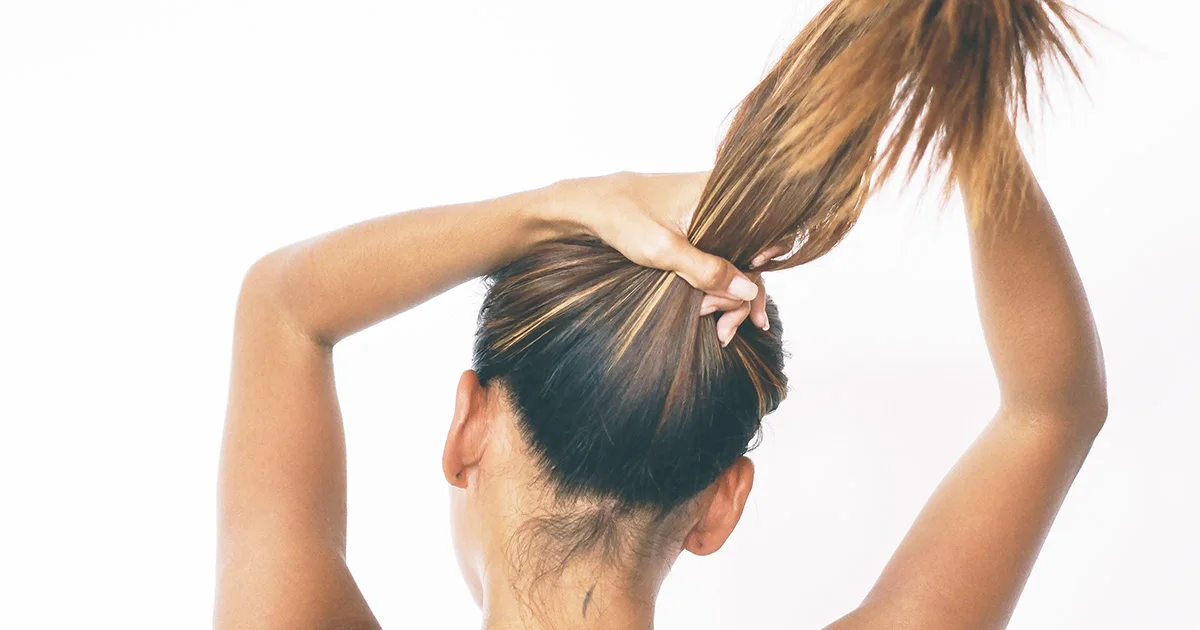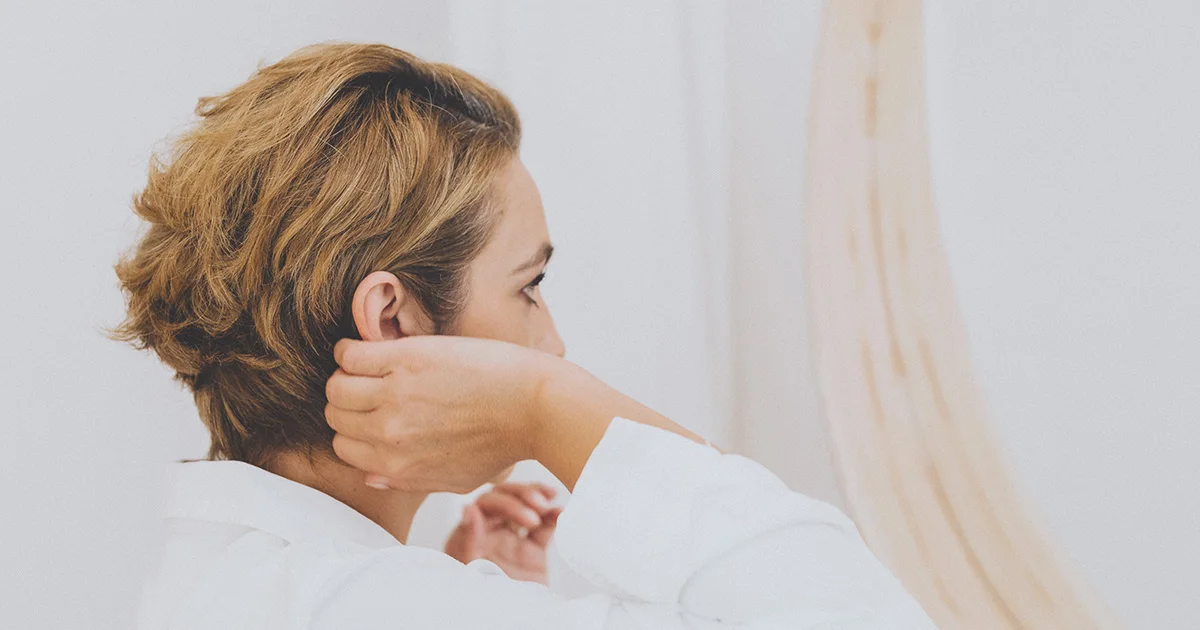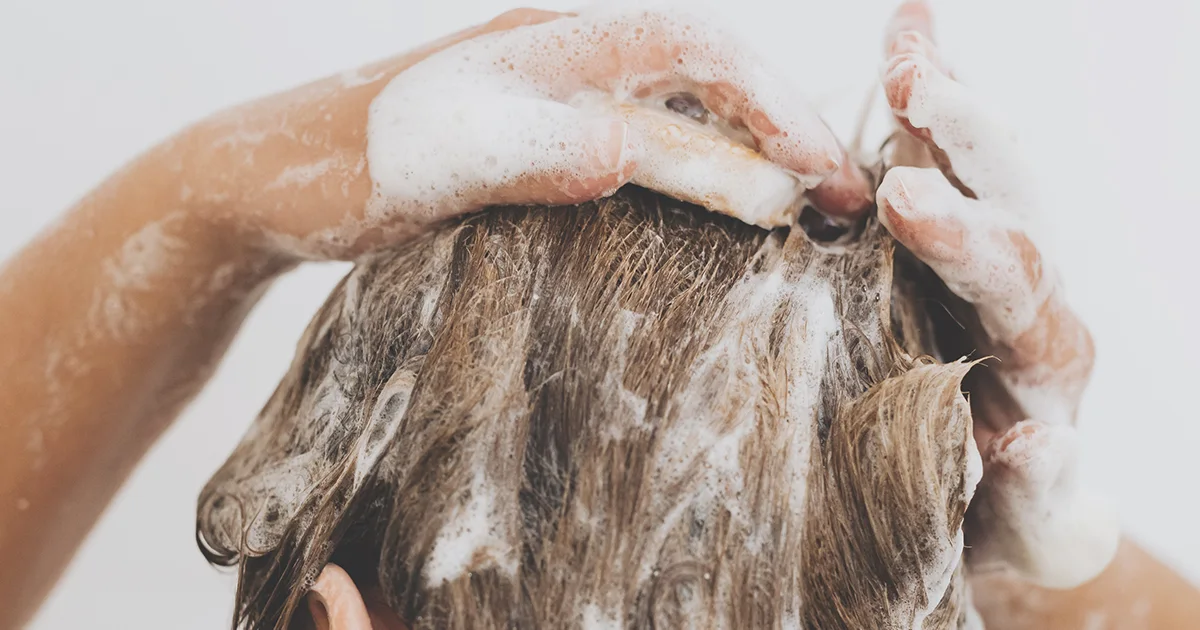Here's what we'll cover
Here's what we'll cover
Whether you’ve dealt with it yourself or observed it on others, you know that dandruff can be embarrassing, annoying, and tricky to manage. Luckily, several treatment strategies may help address the itching, flaking, and irritation of dandruff.
What is dandruff?
Dandruff is a common dermatological problem that affects the scalp. Dandruff is linked to seborrheic dermatitis, an inflammatory skin condition that causes white flakes or yellow scales to form on oily areas of the body. Dandruff can make the scalp feel itchy, and it can also cause redness or skin irritation. It’s more common in men than in women, and it usually develops after puberty. Dandruff affects about 50% of the world’s general adult population (Borda, 2015).
What causes dandruff?
Dandruff can be caused by a variety of factors. Dandruff is sometimes considered the same basic condition as seborrheic dermatitis. However, it only affects the scalp, while seborrheic dermatitis can affect the scalp, face, behind the ears, and upper chest. Both can cause yellow or white flaking and scaling that’s either oily or dry (Borda, 2015).
Certain skin care or hair products can sometimes cause an allergic reaction (called contact allergic dermatitis), which results in dandruff (Borda, 2015). Some research suggests that diet may play a role in developing seborrheic dermatitis (a “Western” diet that’s heavy in meat, potatoes, and alcohol was associated with more seborrheic dermatitis in females). Still, there’s no specific research on a dietary link with dandruff (Sanders, 2019).
Other potential causes include stress, fatigue, oily scalp, immunosuppressed status (in people living with AIDS), certain neurological disorders, and a type of yeast called Malassezia (Rudramurthy, 2014). Dandruff is not contagious.
Malassezia is a type of fungus that can be found all over the bodies of humans and animals but has been associated with dandruff. Researchers believe that an imbalance in certain bacteria may result in an overgrowth of Malassezia, which causes skin conditions like dandruff to develop (Velegraki, 2015).
How to get rid of dandruff
There are several different ways to tackle dandruff, including treatments like medicated shampoos and natural remedies.
Medicated shampoos
One of the most popular ways to get rid of dandruff fast is to switch from regular shampoo to special dandruff shampoo. There are a variety of anti-dandruff shampoos available in drugstores.
Some of the most common active ingredients in over-the-counter dandruff shampoos shown to be effective are zinc pyrithione (also called pyrithione zinc), coal tar, salicylic acid, sulfur, selenium sulfide, ketoconazole, ciclopirox, and clobetasol (Ranganathan, 2010).
Natural remedies
There are various home remedies and other natural treatments that may help target and treat dandruff. Recent studies suggest that coconut oil may have antimicrobial properties that may make it an effective treatment for dandruff (Saxena, 2021).
Apple cider vinegar is another method that some people find helpful in treating dandruff, although no studies specifically investigate the link between apple cider vinegar and dandruff. However, research suggests that apple cider vinegar has antifungal properties, which may make it a helpful dandruff treatment (Yagnik, 2018).
Some research indicates that essential oils may help treat dandruff. One study has shown that a hair tonic formulation containing 10% lemongrass oil significantly reduced dandruff (Chaisripipat, 2015).
Another study found that shampooing with a solution that contains 5% tea tree oil can be an effective and well-tolerated dandruff remedy (Satchell, 2002). Other research has found that baking soda has antifungal properties, but there’s no direct evidence of its effect on dandruff (Letscher-Bru, 2012).
Other treatment methods that may help treat dandruff include the consumption of omega-3 fatty acids, which have been shown to reduce inflammation, and other dietary changes. However, there’s little to no research that directly backs up the effectiveness of specific foods for dandruff relief (Calder, 2010).
How to prevent dandruff
While there is no way to completely prevent dandruff, changing some of your hair care habits may help prevent an itchy, flaky scalp.
Shampooing regularly, especially if you have oily hair, can decrease oil build-up in your scalp. However, take care not to over-shampoo—you will strip your scalp of the necessary oils and can develop dry skin along with an itchy, flaky scalp.
Talk to your dermatologist if you have questions about how often you should be shampooing, as the recommendations may change depending on your ethnicity and skin type. For example, the American Academy of Dermatology (AAD) recommends that white or Asian people with dandruff should shampoo daily and use a dandruff shampoo twice a week. In contrast, African-Americans with dandruff should limit shampooing to once a week using a dandruff shampoo (AAD, n.d.).
When using a dandruff shampoo, make sure to follow the instructions on the bottle—some require you to leave them on the scalp for several minutes, while others need immediate rinsing.
Lastly, limit how much product you put into your hair—too much can build up in your hair and on your scalp, increasing skin oiliness and subsequent dandruff.
DISCLAIMER
If you have any medical questions or concerns, please talk to your healthcare provider. The articles on Health Guide are underpinned by peer-reviewed research and information drawn from medical societies and governmental agencies. However, they are not a substitute for professional medical advice, diagnosis, or treatment.
American Academy of Dermatology (AAD). (n.d.). How to treat dandruff. Retrieved June 4, 2021 from https://www.aad.org/public/everyday-care/hair-scalp-care/scalp/treat-dandruff
Borda, L., & Wikramanayake, T. (2015). Seborrheic dermatitis and dandruff: a comprehensive review. Journal Of Clinical And Investigative Dermatology , 3 (2). doi: 10.13188/2373-1044.1000019. Retrieved from https://pubmed.ncbi.nlm.nih.gov/27148560/
Calder P. C. (2010). Omega-3 fatty acids and inflammatory processes. Nutrients , 2(3), 355–374. doi: 10.3390/nu2030355. Retrieved from https://pubmed.ncbi.nlm.nih.gov/22254027/
Chaisripipat, W., Lourith, N., & Kanlayavattanakul, M. (2015). Anti-dandruff hair tonic containing lemongrass ( Cymbopogon flexuosus ) oil. Complementary Medicine Research , 22(4), 226–229. doi: 10.1159/000432407. Retrieved from https://pubmed.ncbi.nlm.nih.gov/26566122/
Letscher-Bru, V., Obszynski, C. M., Samsoen, M., Sabou, M., Waller, J., & Candolfi, E. (2012). Antifungal activity of sodium bicarbonate against fungal agents causing superficial infections. Mycopathologia , 175(1-2), 153–158. doi: 10.1007/s11046-012-9583-2. Retrieved from https://pubmed.ncbi.nlm.nih.gov/22991095/
Ranganathan, S., & Mukhopadhyay, T. (2010). Dandruff: The most commercially exploited skin disease. Indian Journal Of Dermatology , 55 (2), 130. doi: 10.4103/0019-5154.62734. Retrieved from https://pubmed.ncbi.nlm.nih.gov/20606879/
Rudramurthy, S. M., Honnavar, P., Dogra, S., Yegneswaran, P. P., Handa, S., & Chakrabarti, A. (2014). Association of Malassezia species with dandruff. The Indian journal of medical research , 139(3), 431–437. Retrieved from https://pubmed.ncbi.nlm.nih.gov/24820838/
Sanders, M. G., Pardo, L. M., Ginger, R. S., Jong, J. C. K.-D., & Nijsten, T. (2019). Association between diet and seborrheic dermatitis: a cross-sectional study . Journal of Investigative Dermatology, 139(1), 108–114. doi: 10.1016/j.jid.2018.07.027. Retrieved from https://pubmed.ncbi.nlm.nih.gov/30130619/
Satchell, A. C., Saurajen, A., Bell, C., & Barnetson, R. S. (2002). Treatment of dandruff with 5% tea tree oil shampoo. Journal of the American Academy of Dermatology , 47(6), 852–855. doi: 10.1067/mjd.2002.122734. Retrieved from https://pubmed.ncbi.nlm.nih.gov/12451368/
Saxena, R., Mittal, P., Clavaud, C., Dhakan, D. B., Roy, N., Breton, et al. (2021). Longitudinal study of the scalp microbiome suggests coconut oil to enrich healthy scalp commensals. Scientific Reports , 11(1), 7220. doi: 10.1038/s41598-021-86454-1. Retrieved from https://pubmed.ncbi.nlm.nih.gov/33790324/
Velegraki, A., Cafarchia, C., Gaitanis, G., Iatta, R., & Boekhout, T. (2015). Malassezia infections in humans and animals: pathophysiology, detection, and treatment. PLoS Pathog , 11(1): e1004523. doi: 10.1371/journal.ppat.1004523. Retrieved from https://pubmed.ncbi.nlm.nih.gov/25569140/
Yagnik, D., Serafin, V., & J Shah, A. (2018). Antimicrobial activity of apple cider vinegar against Escherichia coli , Staphylococcus aureus and Candida albicans ; downregulating cytokine and microbial protein expression. Scientific Reports , 8(1), 1732. doi: 10.1038/s41598-017-18618-x. Retrieved from https://pubmed.ncbi.nlm.nih.gov/29379012/










